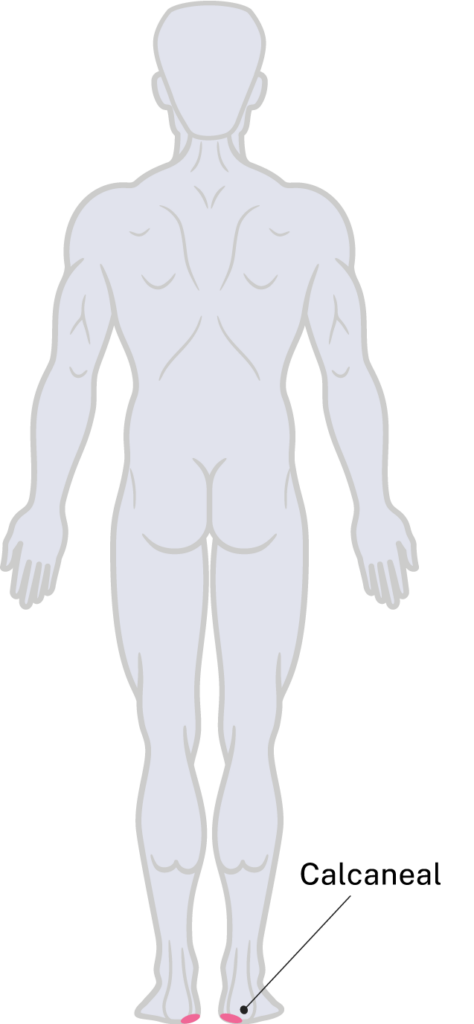Calcaneal
Specific risks
The calcaneal area is at risk from direct pressure, shear, friction, or heat. Environmental risks can include:
- orthoses on lower limbs,
- ill-fitting footwear,
- gait impairments,
- foot placement on footplates,
- vibration from car travel,
- heat from metal objects such as footplates or car floors, and
- oedema and ill-fitting compression stockings.
These areas should be assessed by palpating for ‘boggy’, soft, or tender areas.

Management of breakdown
- Review causative factors such as showering aids, footwear options, wheelchair set up and recent activity.
- Continue sitting if able to offload the wound. Options may include:
- custom orthoses
- appropriate footplate padding
- if the primary means of mobility is walking, then may need to consider the temporary use of a wheelchair and showering aids to completely offload the area
- removing compression stockings
- Review and manage the spasticity or tone as able.
- Review oedema and management with a QSCIS and experienced therapist in oedema management.
- Link with wound care or podiatry services for management and prevention of recurrence. Calcaneal wounds can be slow to heal due to being on the lower extremities where there is impaired circulation and/or oedema.
- Closely monitor for infection and cellulitis. Screen and treat early, if suspected.
Check out other pressure injury locations and learn how to manage them.